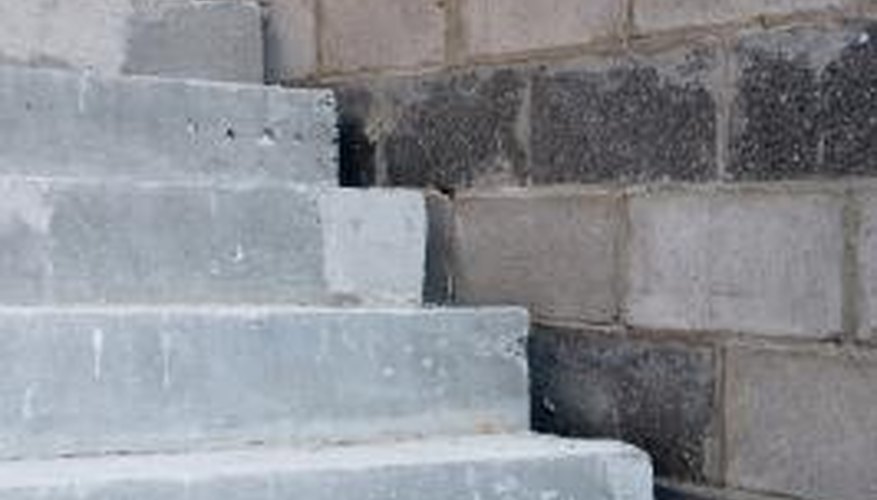Cement is the major substance that binds the various materials used in concrete. Crumbling usually results when cement and concrete aren't properly mixed in the right proportions. In some cases, there's just not enough cement in the mix. In other cases, the cement within the concrete just isn't strong enough to allow it to withstand heavy loads. Or, the cement and concrete haven't set sufficiently.
Cement
Cement is a binding agent. Almost all types of cement will also harden and set independently, even when not mixed with concrete. The two most common types of cement in construction are hydraulic and non-hydraulic. Portland cement is an example of a hydraulic type. It requires water to work and can even harden underwater. To remain strong, non-hydraulic cement, such as gypsum plaster, must be kept dry or it'll eventually crumble.
- Cement is a binding agent.
- Almost all types of cement will also harden and set independently, even when not mixed with concrete.
Crumbling
Portland cement that starts crumbling has often been poorly mixed and with not enough water or gypsum added. Another cause of crumbling cement is sand content. If there's too much sand, the cement won't bind sufficiently with the concrete and crumbling occurs. If the cement's not mixed or hydrated properly it'll soon start crumbling, even if it's been fully set or cured.
- Portland cement that starts crumbling has often been poorly mixed and with not enough water or gypsum added.
- If there's too much sand, the cement won't bind sufficiently with the concrete and crumbling occurs.
Requirements
Whether hydraulic or non-hydraulic, all cement needs to be mixed with enough water to set or cure properly. Some cement also requires the addition of other substances such as gypsum or pea gravel once it's mixed with water. Cement also requires a certain amount of setting or curing time. This can take from 20 minutes to 24 hours, depending on the type of cement.
- Whether hydraulic or non-hydraulic, all cement needs to be mixed with enough water to set or cure properly.
- Some cement also requires the addition of other substances such as gypsum or pea gravel once it's mixed with water.
Warning
You must add the correct amount of water to cement. Too little will yield a weak cement and concrete mix that'll quickly crumble. Too much, and you won't have a thick enough mixture to shape into stairs, sidewalks or most anything else where concrete's used. Always follow your cement's mixing instructions closely to avoid the possibility of crumbling.
- You must add the correct amount of water to cement.
- Too little will yield a weak cement and concrete mix that'll quickly crumble.
